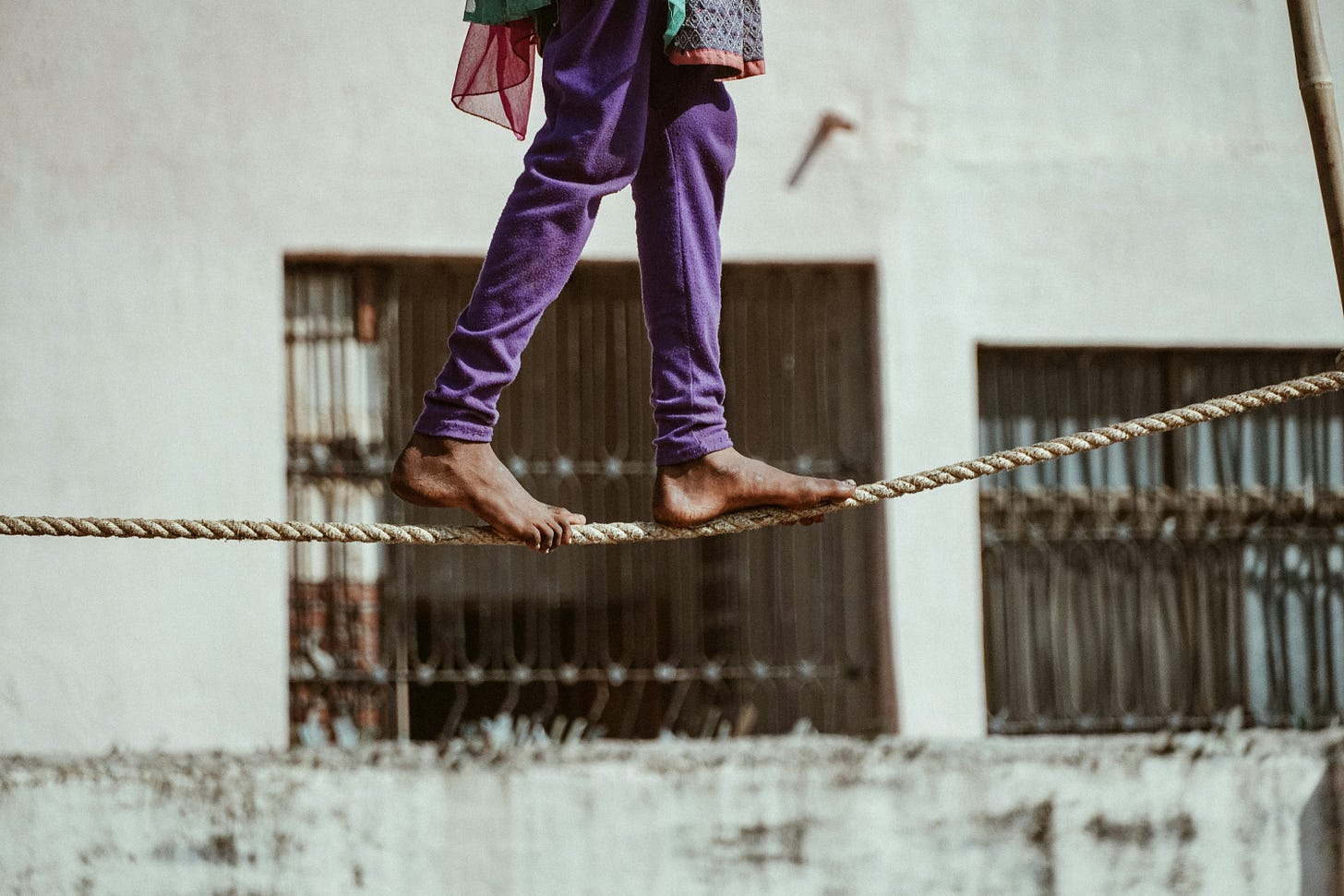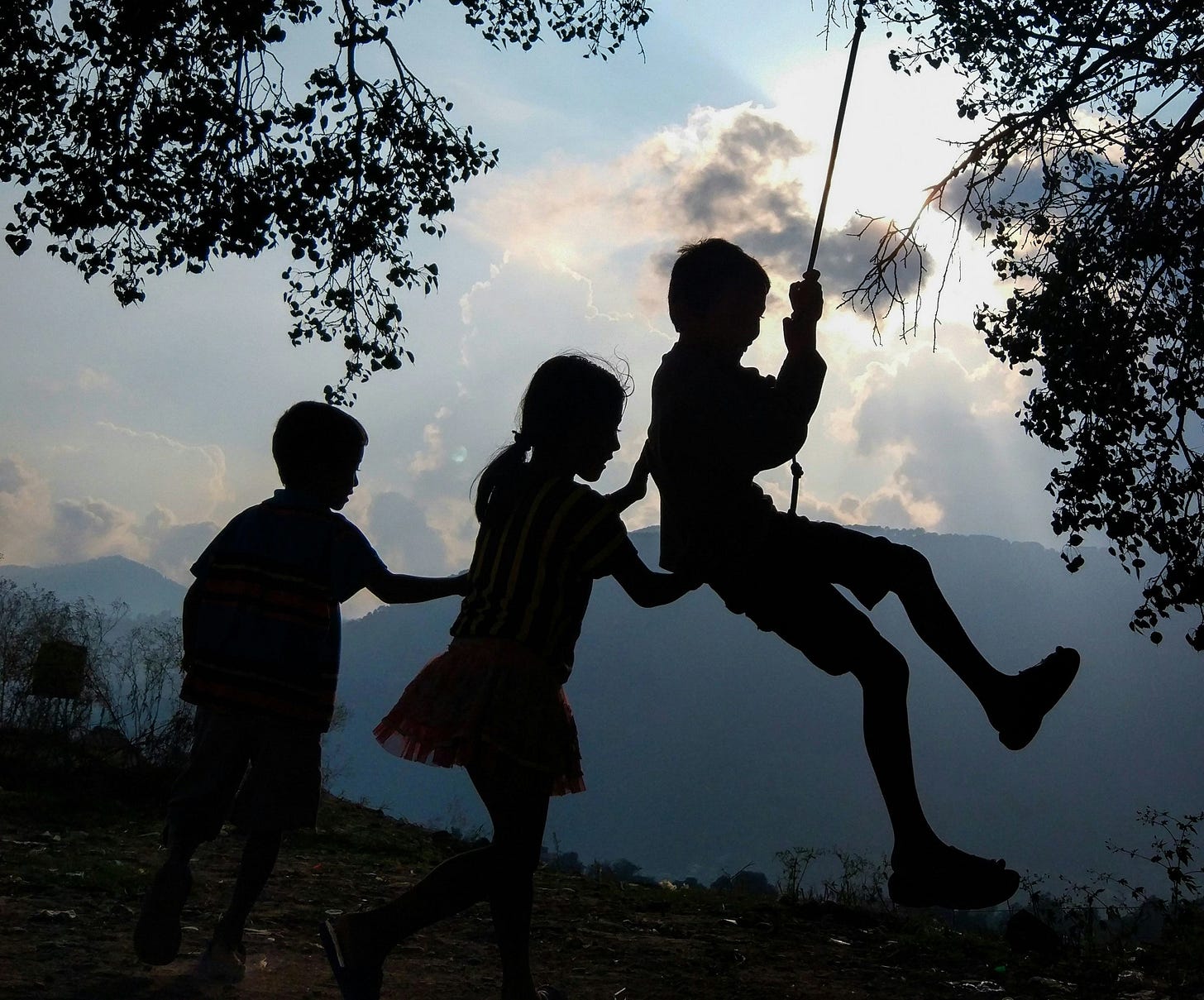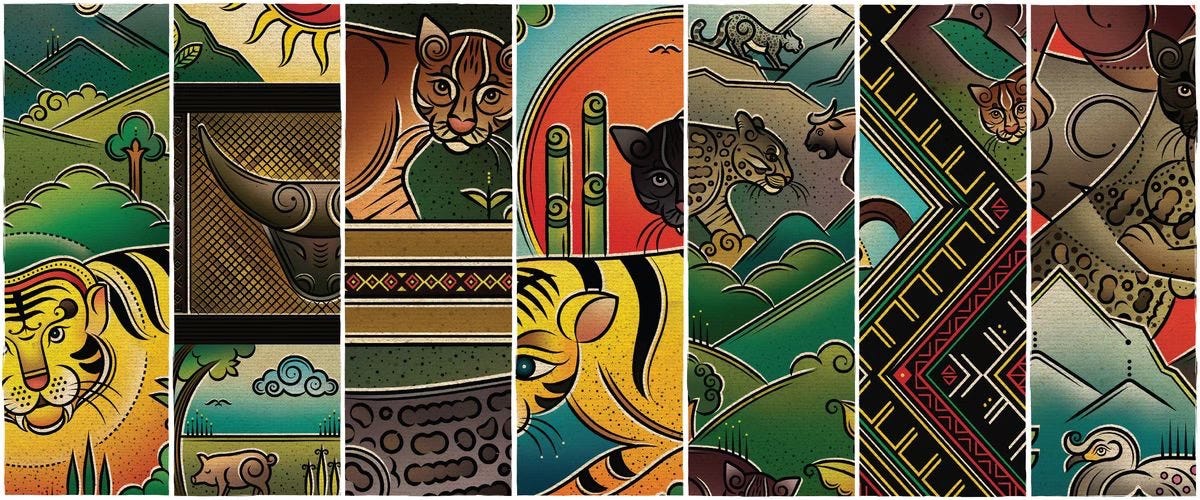
Dear Reader,
We live in an era where capitalism chases self actualisation. It’s impossible to walk into a store, drive by a billboard, or even watch a movie or TV show without being sold some kind of product that will ‘help’ you. And given these uncertain, chaotic times, sales and product development are both sky rocketing. You can’t fix the economy, but perhaps you can fix your sleep cycle with this new and improved mattress. You can’t outrun systems of oppression, but you can count your steps with a fancy new tracker. We make it work. We have to.
The truth is, we’ve grown so used to immediacy. Pressing a button and finding a solution—whether it’s to get your next meal or to have your blood tested. Feeling like the world is at your finger tips is a surreal experience, both detached from reality, and grounded in the complexities of it.
There’s no dearth of advice on how to change your life, how to ‘upskill’ and ‘optimise.’ We’ve all heard the statistics about needing thousands of hours to perfect a skill, or 21 days to form a habit, or the extreme ‘successful’ traits that CEOs try to cultivate. We live life on the edge of burn out at all times, trying to find more hours in a day to learn skills while losing sight of the bigger picture, of the kind of life that all these habits and achievements were supposed to provide us with.
Given this wave of clocked gratification, it isn’t really surprising that there are people who push back against this. The ones who sense the danger of fastforwarding through what is meant to be experienced. The ones that value connection, community, craft, stillness. The ones that find beauty in the overlooked. The ones that find ways to create regardless of their circumstances. The ones who define practice not as what you do with your craft, but everything you do. What you create, the work you put out into the world, is all continuous with how you live life elsewhere. This is not to say that every part of life is, or should suddenly be, creative. In fact, these teachers don’t emphasise a particular kind of ‘creative’ or generative outcome at all.
This lens of life as practice can be either stressful or exhilarating. It can be the ultimate workaholics creed, or instill every mundane activity with purpose and intention. Practice, in this sense, is not staring at your laptop, or spending all your time in a lab or studio. Though that can certainly be part of it. Iterative engagement with the routine of research that has been the basis for so many incredible discoveries and inventions. And in our final two instalments of the Cataplisms series this month, we hope you get a glimpse of the kind of insight and exciting revelations that can be gained by such sustained engagement.

While one kind of consistency is important, the idea of life as practice asks that this intention and purposefulness of ‘practice’ permeate every part of your life. Anything can be your practice, and everything is your practice. There is a continuum, not an oppressive one, but one that allows and encourages you to pay as much attention, and give as much value, to a conversation with a friend, a passing interaction, chores and regardless of the hustle that the capitalist entrepreneurial powers that be may encourage, even to rest, as to what might be traditionally classified as ‘work’.
Just because there are classical arts spaces and traditional educational institutions where ideas of practice are mangled, it doesn’t take away the value of repetition. As Tasneem writes in the next Time and Tide essay, practice, repetition and return, can be a means of intimacy, of building, layer by layer, an embodied and collective knowledge. A knowledge that is passed down and accumulated, like genes encoding the history of our ancestors, from generation to generation. This kind of intimacy and knowledge is born not just out of repetition but intention and attention. Practice rewires our brains; neural pathways are created and strengthened as we practice a skill or habit or routine. Maybe it’s not nature versus nature, but how you nurture what is. So, what are the experiences that you would let into your embodied self? What spaces and places are important enough that you would let them fundamentally reshape you?
Practice is any or all of these things: repetition, understanding, showing up, intentionality. But when the results of our practice begin to take shape, or even what shape it may take, is unpredictable. There will be, as Tasneem says, a time of repetition before the pictures come into focus. Perhaps more time than is comfortable. Some of the things we practice, some of the paths we try to walk will not widen into roads in our lifetime. You are, as the saying goes, planting trees you won’t sit under. But if you’ve sown enough seeds, and laid enough markers, the next person will walk the path, perhaps to a destination you hadn’t even imagined.
Till next time,
Team Dark ‘n’ Light
Down the Rabbit Hole
Siyahgosh. Karakulak. Caracal.
In the final instalment of our Herding Cats series, naturalist and tracker Uditchandra Pal gives us a glimpse behind the scenes, showcasing his efforts to capture footage of the enigmatic and endangered Asiatic caracal, an icon of India’s grasslands.
In the sixth essay of the Time and Tide series, Tasneem Khan writes of knowledge embodied in communities and coastlines, of the intimacy of repetition, attention that attunes, and practice that makes dreams real and expands horizons.
The Amazing Morphs of the Golden Cat
In this audio story, final instalment of Cataplisms, conservation anthropologist Sahil Nijhawan and his collaborator Iho Mitapo tell the story of their incredible discovery about a unique adaptation of the elusive Asian golden cat and other stories from the Dibang Valley. This story has also been vibrantly illustrated in a comic by artist Sudarshan Shaw.
Stories from the Margin
In the third episode of season four of Arcx, Anjali Alappat talks to not one but three guests–Rashmi Devadasan, Rakesh Khanna and R.T. Samuel–the creative minds behind the Blaft Book of Anti-Caste SF which has been making waves in the Indian speculative fiction scene.
They discuss the lack of understanding around caste, what is missing from the Indian SFF scene, the challenges and thrills of putting together an expansive anthology and the importance of translated fiction.
In episode four, she chats to writer, academic and documentary producer, Sami Ahmad Khan. They discuss Sami’s love for pulpy science fiction, the importance of translated fiction, T-rexes, Black holes, the Bermuda triangle, thought experiments, genre conventions, the future of Indian scifi and more.
Editor’s Pick
This month’s recommendation is by editor Anjali Alappat.
Tara and Mansi have been best friends since they were children. Despite coming from entirely different worlds and value systems, they’ve been the most important person in each other’s lives for decades. Tara, a wildlife researcher, has moved to the mountains to study wild dogs while Mansi works an office job and married her first boyfriend. Their lives, despite heading in entirely different directions, remain intertwined through phone calls, fierce fights, memories, and deep affection.
When Tara goes missing, Mansi’s world falls apart. She goes to the remote mountain valley where Tara resided looking for something: answers, a connection, closure. She knows Tara is gone, but finds it impossible to accept, even as the police have her stalker in custody.
Amrita Mahale is a rare author whose prose is so beautiful you feel compelled to read each line again and again. But you can’t linger too long, largely because you have to know what happens next. She writes with conviction and surety, deftly tackling a variety of tough topics—from caste and class to friendship, love, obsession and ambition. This novel feels essential, an exploration worth making. Highly recommended.






